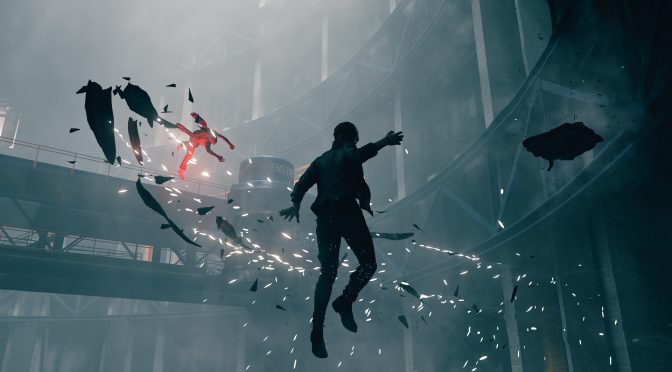Remedy’s Control releases tomorrow and since 505 Games has lifted the game’s embargo, we can finally talk about its PC performance. As we’ve already reported, Control is taking advantage of real-time ray tracing and supports NVIDIA’s DLSS. And we are happy to report that DLSS looks great in this title.
Before continuing, I strongly suggest opening the images in new tabs so you can more easily spot the visual differences.
For starters, a single NVIDIA GeForce RTX2080Ti is unable to run the game on Max settings with constant 60fps at either 1080p or 1440p. The game is fully playable at those resolutions, however there are drops below 50fps even on 1080p. As such, DLSS is really important and necessary for those that want to enjoy the game’s ray tracing effects.
For instance, at 1080p on Max Settings and with High Ray Tracing, our NVIDIA GeForce RTX2080Ti was able to run our benchmark scene with a minimum of 50fps and an average of 59fps. At 2560×1440 with High Ray Tracing, we were getting a minimum of 38fps and an average of 43fps. However, and once we enabled DLSS, our RTX2080Ti was able to push constant 60fps at 1440p.
Not only that, but the image quality (between 1080p and 1440p) appears to be similar. There are some extremely slight changes, but most of you won’t be able to notice them while playing the game. For instance, here is a comparison between 1080p (left), 1440p DLSS (middle) and native 1440p (right).
In fact, the DLSS implementation is so good that it is also difficult to spot – while playing – the visual differences between 1440p DLSS and native 1440p. Below you can find some comparison (DLSS is on the left whereas native res is on the right). As you will see, the only way to really notice the visual differences is by closely examining the images.
In some cases, DLSS eliminates aliasing better than MSAA. Below you can find another comparison and as we can see, DLSS smooths more jaggies than MSAA 4X. 1080p with MSAA 4X is on the left, 1440p with DLSS is in the middle, and native 1440p with MSAA 4X is on the right.
You can also find below some comparison screenshots between native 2560×1440 and 4K DLSS. In these comparison we have disabled Ray Tracing, something that may interest some of our readers. As we can see, there are less jaggies in the 4K DLSS screenshots. You can easily spot the 4K images from the smaller MSI overlay size.
Our full PC Performance Analysis will go live later today or tomorrow. In that article, we’ll also talk a bit more about the game’s Ray Tracing effects. Naturally, we’ll also have results from more GPUs on the most common resolutions.
Enjoy the following videos and stay tuned for more!

John is the founder and Editor in Chief at DSOGaming. He is a PC gaming fan and highly supports the modding and indie communities. Before creating DSOGaming, John worked on numerous gaming websites. While he is a die-hard PC gamer, his gaming roots can be found on consoles. John loved – and still does – the 16-bit consoles, and considers SNES to be one of the best consoles. Still, the PC platform won him over consoles. That was mainly due to 3DFX and its iconic dedicated 3D accelerator graphics card, Voodoo 2. John has also written a higher degree thesis on the “The Evolution of PC graphics cards.”
Contact: Email






















